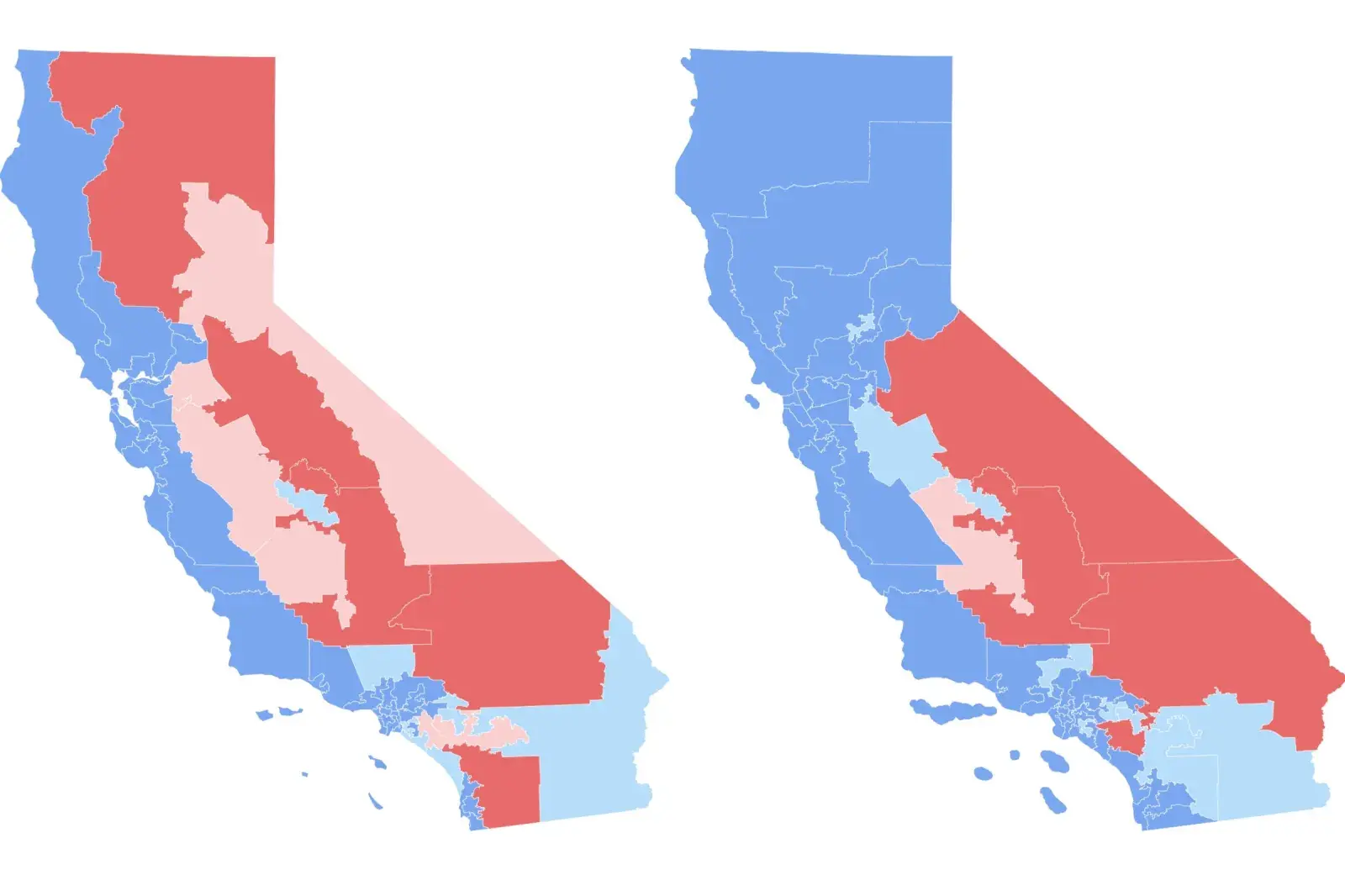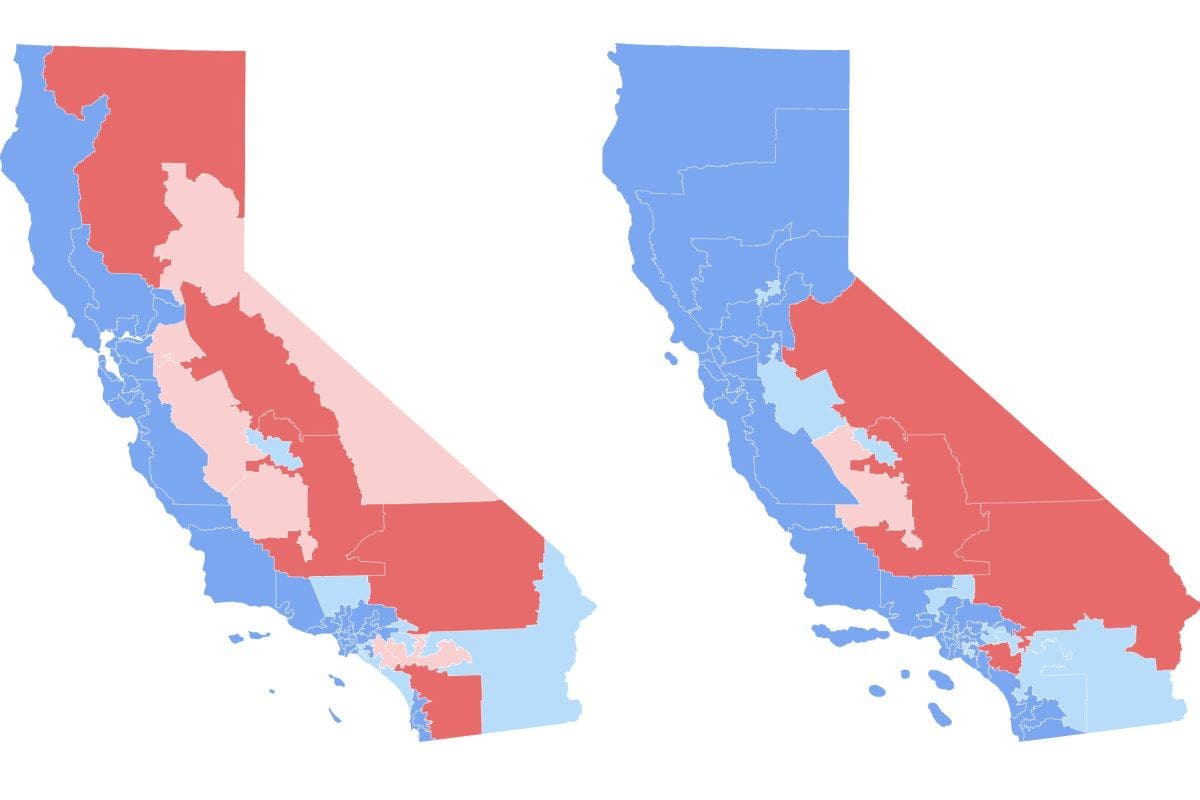A newly released draft map shows how Proposition 50 would substantially redraw California’s congressional districts,
Under the proposal, districts such as CA-01, CA-03, CA-22, CA-41 and CA-48 are planned to shift by shedding conservative-leaning counties and absorbing more Democratic-leaning areas.
Why It Matters
If passed, the new congressional map would create more Democratic seats in California, thus neutralizing a Republican-favoring redistricting plan advancing in Texas.
If there are more California Democrats, this would also help the Democrats more broadly in the November 2026 midterms. Republicans hold a narrow 219-213 majority, meaning a net loss of just six seats would cost them control of the chamber. If the Democrats gain the House, they will be able to control the passage of key legislation and act as a roadblock to the Trump administration’s priorities.
 What To Know
What To Know
Proposition 50 would authorize California to adopt a new congressional map created under Assembly Bill 604 (AB 604), replacing the current boundaries drawn by the state’s independent Citizens Redistricting Commission in 2021. If approved by voters, the new map would be used for the 2026, 2028, and 2030 elections, after which the commission would resume its role and draw fresh districts in 2031 following the 2030 Census.
Under the existing map, Republicans dominate much of inland California while Democrats control the coast and major cities. The proposed map, however, shifts several inland and southern districts toward Democrats, consolidating Republican voters into fewer, larger districts.
According to the new boundaries, Districts 3 and 5 — previously a lean Republican and a solidly Republican seat — would be combined into a single strongly Republican district. Meanwhile, several formerly red districts in the Central Valley, Inland Empire, and Orange County would become more competitive or tilt Democratic. Northern California also sees a major change, with large Republican-leaning areas redrawn to include more Democratic territory, further reshaping the state’s political balance.
The plan — passed by the State Assembly (57–20) and State Senate (30–8) along party lines in August — is designed to give Democrats a stronger advantage in several key congressional races. According to political analysts Kyle Kondik and J. Miles Coleman, the new boundaries could help Democrats gain up to five additional seats, targeting Republican Representatives Doug LaMalfa (CA-1), Kevin Kiley (CA-3), and Ken Calvert (CA-41), with two others — David Valadao (CA-22) and Darrell Issa (CA-48) — seen as toss-ups.

Democrats are optimistic that voters will approve the measure, given California’s strong left-leaning record — it backed former Vice President Kamala Harris by 20 points last November.
According to September polling by Emerson College, 51 percent of people said they would support the ballot measure while 34 percent said they were against it. An additional 15 percent were undecided.
Newsom has defended Proposition 50 as a direct response to recent redistricting moves by Republican-led states. “They’re not screwing around. We cannot afford to screw around either,” Newsom said. “We have got to fight fire with fire.”
Proposition 50 also includes symbolic language urging Congress to support independent, nonpartisan redistricting commissions nationwide, framing the proposal as part of a broader call for “fair and independent” map-drawing across the country.
Newsom’s proposal follows a new redistricting law passed in Texas on August 22, which, according to The Texas Tribune, could give Republicans up to five additional U.S. House seats. The Texas plan was advanced after the Justice Department said four districts were unconstitutional racial gerrymanders. GOP lawmakers, including Representative Todd Hunter and Senator Phil King, said the goal was to “improve Republican political performance,” while President Donald Trump endorsed the plan, saying Texas was “entitled to five more seats.”
Newsom argued that California’s ballot measure “will nullify what happens in Texas,” predicting it could allow Democrats to gain five seats — but, he noted, “with the consent of the people,” since voters must approve the measure.
Similar efforts have emerged in Missouri, where the state legislature passed a new map dividing Kansas City among three congressional districts. Trump praised the plan as a “gigantic victory” for Republicans, while Democratic Representative Emanuel Cleaver called it an “unconstitutional attack” on democracy.
What People Are Saying
California Governor Gavin Newsom said in August: “We’re neutralizing what occurred, and we’re giving the American people a fair chance, because when all things are equal, and we’re all playing by the same rules, there’s no question that the Republican Party will be the minority party in the House of Representatives next year.”
Representative Kevin Kiley, a California Republican, wrote in an August statement: “California voters are overwhelmingly opposed to Newsom’s plan to sideline our state’s Citizens Redistricting Commission. Yet the Supermajority Legislature chose to ignore this and will now spend $250 million trying to convince voters to reverse themselves and return power to politicians. The political leadership of California has never been more out of touch with the people of California.”
What Happens Next
The redistricting ballot will be decided in a November 2025 special election. Meanwhile, the midterm elections take place the following year, in November 2026.

